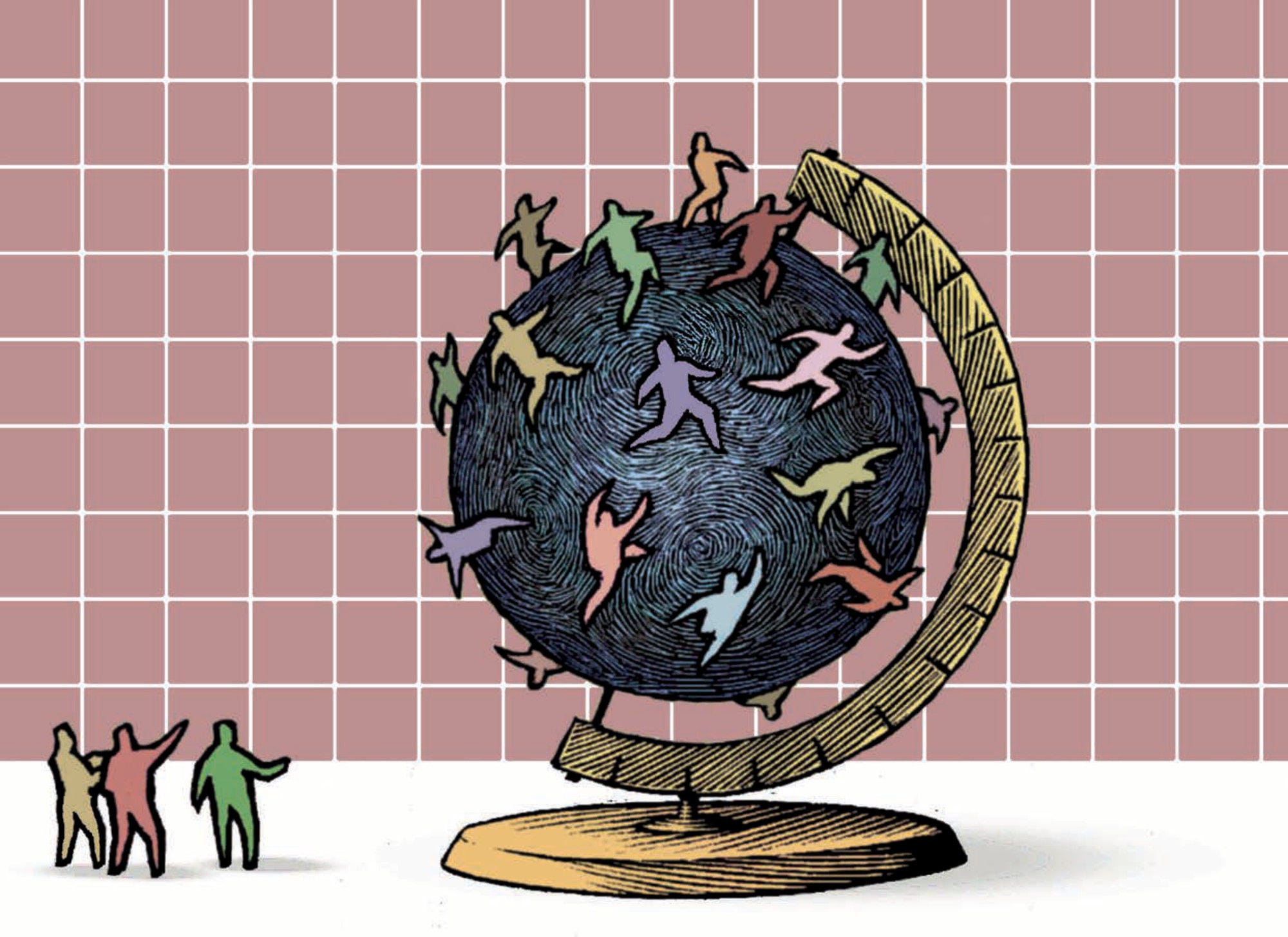The 2022 edition of International Migration Outlook analyses recent developments in migration movements and the labour market inclusion of immigrants in OECD countries. It also monitors recent policy changes in migration governance and integration in OECD countries. This edition includes a special chapter on the policy responses by OECD countries to the large inflow of refugees from Ukraine as well as a series of three short chapters on international students analysing respectively recent trends, attraction and retention policies as well as the economic impact of international students. The Outlook also includes country notes and a detailed statistical annex.
International Migration Outlook 2022

Abstract
Executive Summary
Migration flows bounced back in 2021
After a record decrease in 2020 due to the COVID‑19 crisis, permanent-type migration to OECD countries bounced back by 22% in 2021. First data suggest that the increase in permanent migration flows continued in 2022.
Family migration increased by 40% in 2021 and remained the largest category of inflows, accounting for more than four in ten new permanent immigrants to the OECD. Migration in free mobility areas was less affected by the pandemic, but still fell by 17% in 2020. This trend persisted in 2021, with an estimated decrease of 2%, largely due to Brexit. Free mobility in EU27 countries slightly bounced back with an estimated increase of 4%. Labour migration to OECD countries recovered strongly, by 45%, in 2021 (18% of total permanent-type inflows). Permanent humanitarian migration rose slightly by 4% in 2021, after four consecutive years of decline.
The number of new asylum applications to OECD countries rose by 28% in 2021, to above 1 million. The main origin countries were Nicaragua, Afghanistan and Syria.
Labour market outcomes of immigrants were more resilient than expected
While labour market outcomes for immigrants declined more strongly than those of the native‑born in 2020, they also disproportionately improved in 2021. In 2021, around 70% of immigrants were employed, and 9% unemployed, OECD-wide. In almost half of OECD countries, immigrants returned to or exceeded their pre‑crisis level of employment in 2021. In particular, the labour market performance of recently arrived immigrants improved more in 2021 compared to their longer-settled counterparts.
The global competition for talent is back on the policy agenda
The global competition for talents continues and new pathways to attract highly educated migrants, remote workers and potential investors have emerged. At the same time, labour shortages, including in low- and middle‑skilled occupations, have led several countries to expand temporary labour mobility schemes and bilateral agreements to recruit foreign workers. More generally, COVID-related travel restrictions were gradually lifted in most OECD countries.
Reforms of integration programmes mostly focused on increasing individualisation, improving mentorship, language training, and helping migrants gain rapid and stable access to the labour market. Several countries, notably Germany and the United States, enhanced measures to facilitate or promote naturalisation. A few countries have also put forth National Action Plans to combat discrimination and racism.
Regularisation occurred in 2021/22 in Chile and Italy, and one was announced in Ireland. Colombia launched a far-reaching regularisation for Venezuelans.
Responding to the refugee crisis from Ukraine
Russia’s unprovoked war of aggression against Ukraine, which started on 24 February 2022, generated a historic mass flight. OECD countries responded swiftly, granting immigration concessions to Ukrainian nationals, such as visa exemptions, extended stays or prioritisation of immigration applications. The Council of the European Union enacted, for the first time, the Temporary Protection Directive, which provides a set of harmonised rights for the beneficiaries in all EU Member States. Non-EU OECD countries also took, to varying degrees, measures to facilitate the entry and stay of Ukrainian people fleeing the war.
The transition to medium- and longer-term solutions has exposed emerging challenges, including moving away from temporary and other similar subsidiary statuses towards more lasting solutions, mainstreaming support measures, preventing secondary flows and preparing for changes in public mood and support.
International students make a large economic contribution in most OECD countries
In 2020, there were 4.4 million international students enrolled in the OECD, accounting for on average 10% of all tertiary students. The most important receiving countries are the United States (22% of all international students), the United Kingdom (13%) and Australia (10%). While the destinations of international students have diversified over the past decade, the main origin countries remain China and India (22% and 10% of all international students, respectively).
Over the past decade, almost all OECD countries implemented wide‑ranging policies to retain international students after completion of their degree, but the retention of international students varies greatly. Five years after initial admission, more than 60% of international students who obtained a permit for study reasons in 2015 were still present in Canada and Germany, around half in Australia, Estonia and New Zealand, and around two in five in France and Japan. The share of students remaining was below 15% in Denmark, Slovenia, Italy and Norway.
Former international students are an important feeder for labour migration in many countries. Transition from study permits accounted for a large share of total admissions for work in 2019, especially in France (52%), Italy (46%) and Japan (37%). In the United States, former study (F‑1) permit holders accounted for 57% of temporary high-skilled (H‑1B) permit recipients.
During their studies, between one in three and one in four international students work in the EU, the United Kingdom and the United States, about one in two in Australia and nine in ten in Japan. International students who remain in the host country post-study have long-term employment rates that are on par with those of labour migrants and well above those of migrants overall. Their overqualification rates are half of those of labour migrants or other migrant groups.
While student migration can be of great benefit, the delegation of a gatekeeping role to higher education institutions, and the growing share of economic migration comprised by former students, still carry a number of risks, including distorting migration regulation and undermining labour market regulations.
Key findings
OECD countries received 4.8 million new permanent-type immigrants in 2021, a 22% increase relative to 2020, but still more than half a million fewer than in 2019.
The United States remained the largest recipient of permanent immigrants in 2021 (834 000), 43% more than in 2020, and 19% less than in 2019. In the EU, the upturn in permanent-type migration (+15%) was less pronounced.
By mid-September 2022, close to 5 million individual refugees from Ukraine had been recorded across the EU and other OECD countries, out of whom about 4 million had registered for temporary protection or similar national protection schemes in Europe.
Across OECD countries, international students made up 5% of students enrolled at bachelor’s, 14% at master’s, and 24% at the doctoral level in the academic year 2020.
International students tend to study in their region of origin. In 2020, 29% of international students in OECD countries remained in the same broader geographical region.
In the OECD as a whole, direct export revenues from international students increased in nominal terms from over EUR 50 billion in 2010 to over EUR 110 billion in 2019.
In the same series
Related publications
-
 4 September 2024
4 September 2024 -
 28 June 2024
28 June 2024 -
 11 June 2024
11 June 2024








